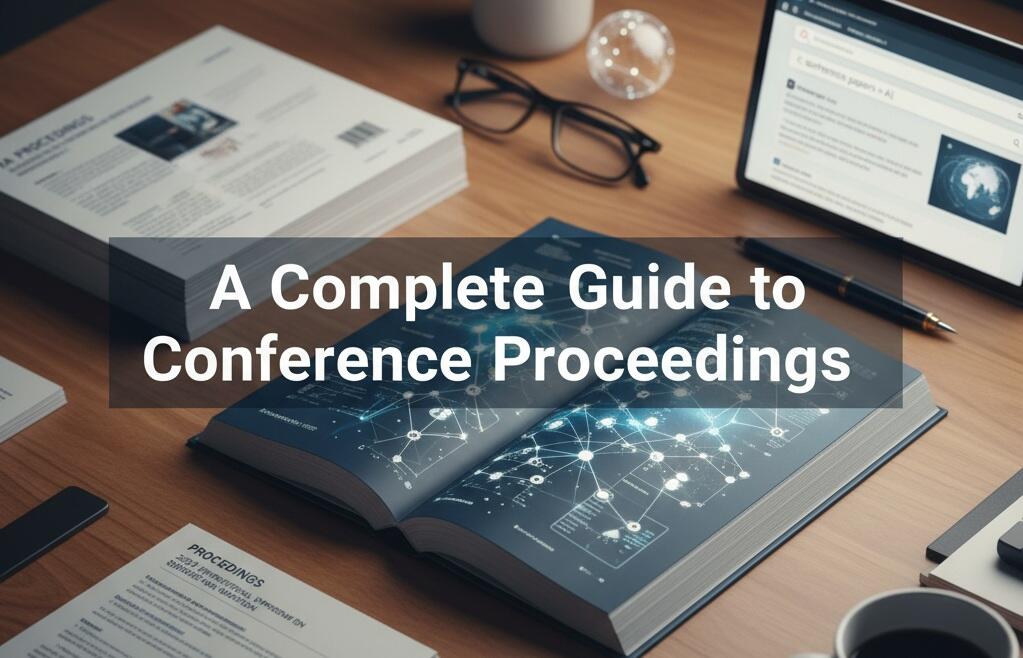
A Complete Guide to Conference Proceedings
This guide explains everything you need to know about conference proceedings, from how they are published, where to find them, to why they are so important.
What are Conference Proceedings?
Conference proceedings are a collection of papers or articles from research presented at an academic event. They provide early access to research findings, encourage collaboration, and accelerate innovation among academics. They can include abstracts or reports of research papers presented by participants. In many cases, papers presented at a conference are later republished in academic journals.
The publication process for proceedings is typically faster than publishing scientific articles in journals, making it an effective way for researchers to quickly promote their work. This also makes it easier for other academics to discover new insights and innovations in a particular field, as well as to learn about ongoing research on a topic.
The characteristics of conference proceedings can be recognized through their citation format, namely:
- Include the full date (year, month, and day of the conference).
- Indicate the type of presentation session (e.g., plenary session, panel session, or poster session).
- Indicate the location of the conference
Proceedings vs. Conference Papers
- Conference Papers: Written by researchers who wish to present their research findings. These papers are submitted through a call for papers and reviewed by a committee. If accepted, the papers are presented in various formats, such as oral presentations, posters, or panel discussions.
- Conference Proceedings: A collection of all papers or abstracts accepted and presented at a conference, thus becoming the official record of the event.
The paper submission process involves a call for papers, submission through an abstract management system, review by a committee (usually using single-blind or double-blind review), and notification of results to authors. After the conference concludes, all presented papers are compiled into conference proceedings.
Why are Conference Proceedings Important?
Conference proceedings have a big role in the academic world because:
- Providing early access to the latest research before it is formally published in a journal.
- Providing opportunities for researchers, especially those just starting out, to present their work in a more flexible forum.
- Help other academics learn about a conference’s track record, particularly in avoiding predatory conferences that can harm researchers’ reputations.
- Being a resource for identifying who has contributed to a field and the topics currently being developed.
- Inspiring new organizers in designing the diversity and scope of research a conference can accommodate.
Stages of Publication of Conference Proceedings
Proceedings are usually published by the conference organizer or sponsor. The process includes:
- Determine the publishing institution for the proceedings.
- Check the publisher’s requirements (usually available on their official website).
- Compile a publication proposal and submit it to the publisher.
- Await the proposal’s evaluation.
- If accepted, the publisher will send a publication agreement with a fee breakdown.
- Sign the agreement and make payments, if required.
Where Can I Find Conference Proceedings?
- Search Engines: Use Google with the keyword “proceedings” and your research topic.
- Journals: Many academic journals publish the proceedings of specific conferences.
- Conference Websites: Check archives or event documentation.
- Library Databases: Universities and research organizations often provide access to past proceedings.
Conclusion
Conference proceedings play a crucial role in accelerating the dissemination of scientific knowledge, fostering collaboration, and helping researchers assess the quality of a conference. By bridging the gap between conference research presentations and journal publication, proceedings are a vital element in building a more open and connected scientific community.
